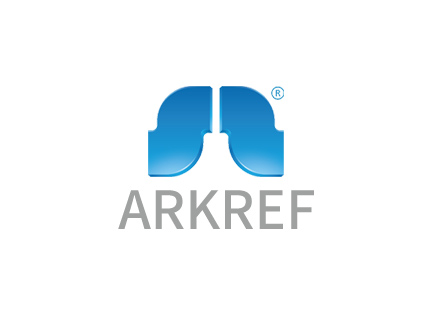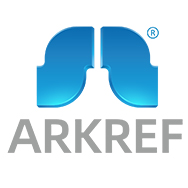Water chiller basics and how it keeps things cool
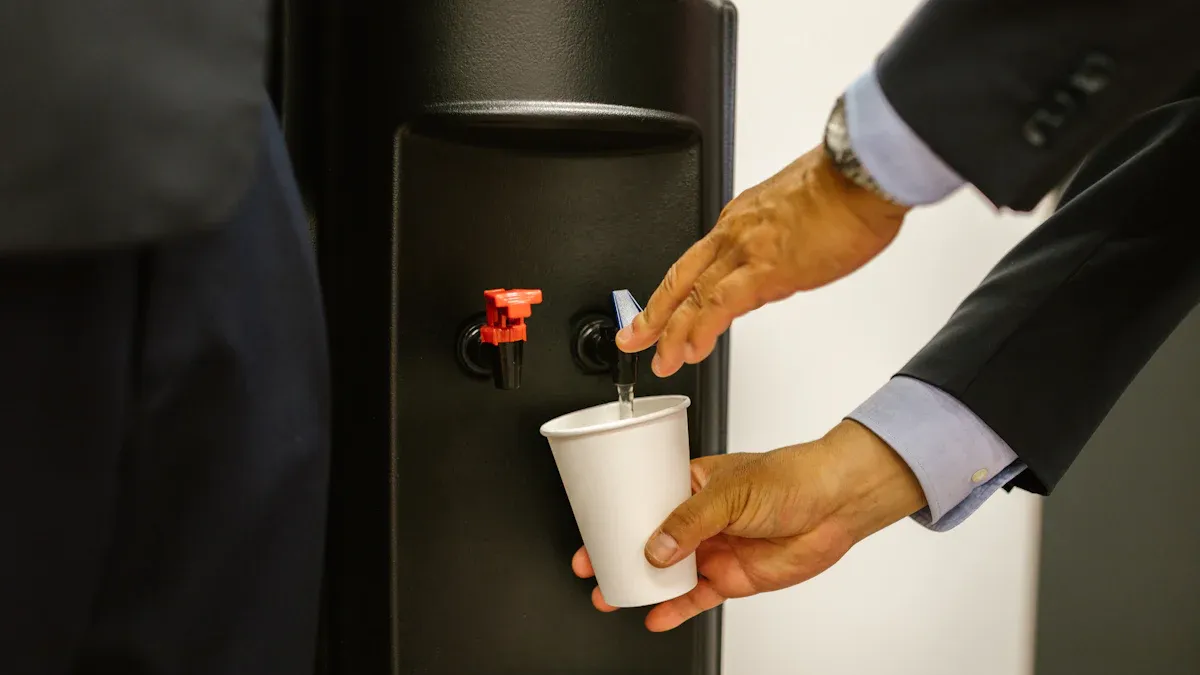
A water chiller makes water cold by taking heat out. It sends the cold water to where it is needed. This device uses a refrigeration cycle. That means it moves heat away from the water. It keeps the water at the same temperature. You often find a water chiller in places that need exact cooling. These places include factories and labs. Studies show that changing how much refrigerant is used can change how well it cools. Sometimes, this can make cooling work over 3% less. It is important to stay cool and use energy smartly.
Key Takeaways
A water chiller makes water cooler by taking away heat. It uses a refrigeration cycle to do this. This helps keep machines and rooms at the same temperature.
Water chillers have important parts like compressors, evaporators, condensers, and expansion valves. These parts work together to move heat out of the water.
People use water chillers in factories, big buildings, data centers, and aquariums. They help protect machines and make places more comfortable.
Water chillers save energy and lower costs with smart controls and good designs. This makes them good for the environment and very dependable.
Doing regular care like cleaning filters and checking refrigerant is important. This helps water chillers work well and last longer.
Water Chiller Overview
What Is a Water Chiller
A water chiller is a machine that makes water cold for many things. You can find it in big buildings, factories, and places where cooling is important. In an hvac system, a water chiller works with an air handling unit. It moves cold water through pipes. This cold water cools the air in rooms or stops machines from overheating.
Here is a table that lists key facts about water chillers:
Aspect | Details |
|---|---|
Types | Scroll, Screw, Reciprocating, Modular, Portable |
Capacity Categories | Small (up to 20 tons), Medium (21-100 tons), Large (101+ tons) |
Applications | Industrial, Commercial, Residential, Process Cooling, Food & Beverage Processing |
End-User Industries | Manufacturing, HVAC, Pharmaceuticals, Data Centers, Agriculture |
Features/Technologies | Energy Efficient, Variable Speed Drive, IoT Integration, Noise Reduction, Eco-friendly Refrigerants |
Market Size (2024) | |
Forecast Growth Rate | CAGR 4.9% (2026-2033) |
Market Size (2033) | USD 13.72 Billion |
Primary Functions | Stable cooling, process optimization, temperature control |
Operational Advantage | Air-cooled chillers work without water cooling towers, good for water-scarce regions |
Challenges | Competition, regulations, economic factors |
Main Purpose
A water chiller keeps water cool and steady. This protects equipment and products that need exact cooling. In an hvac system, the water chiller sends cold water to the air handling unit. The air handling unit cools the air in the building. This keeps rooms nice and machines safe.
Industrial water chillers give you exact temperature control. This keeps equipment safe and products good.
Closed-loop systems in chillers use less water than old open-loop systems.
Energy-efficient compressors and strong parts make chillers last longer.
You get less downtime, longer equipment life, and quick payback.
Chillers are quiet and help keep work going in many industries.
You can use chillers in different ways, like mobile or fixed setups.
Water chillers are also important in data centers. They help control heat by using closed-loop systems with cooling plates and other systems. This keeps computer chips cool and saves energy, even when it is hot outside.
How Water Chillers Work
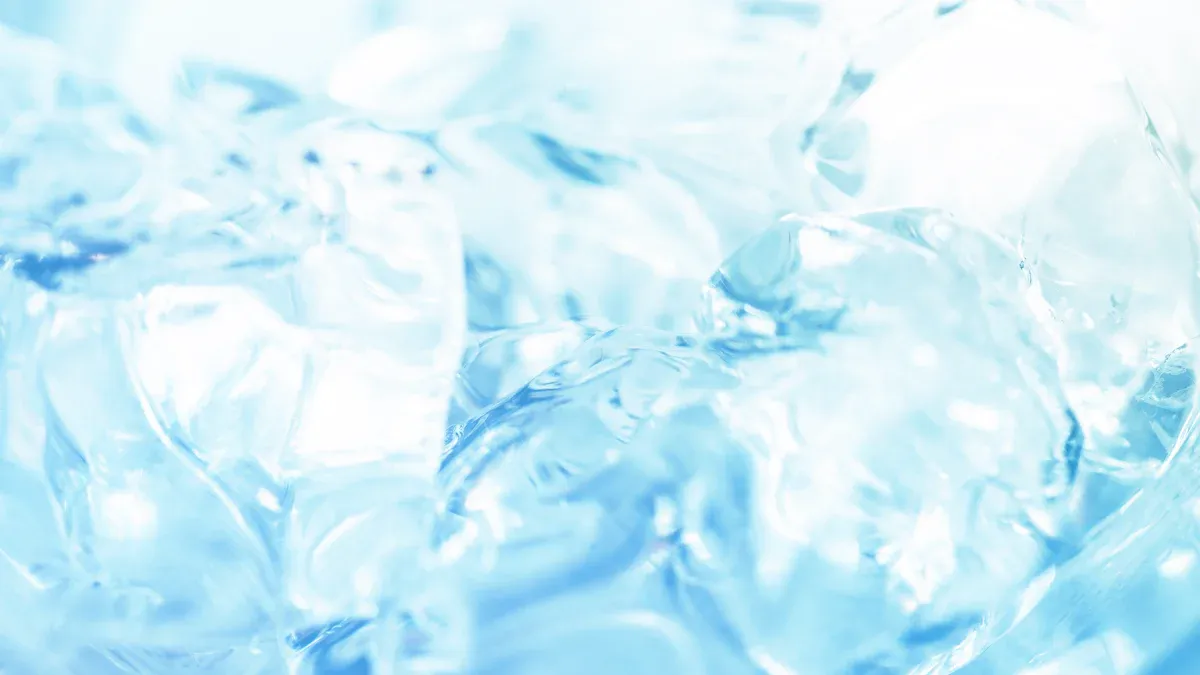
Cooling Process
A chiller system moves heat away from water. This keeps the water cold for many uses. The main part of this process is the refrigeration cycle. Here is how it works in simple steps:
The evaporator is where the refrigerant takes heat from water. The refrigerant changes into a vapor here.
The vapor goes to the absorber. In this part, the vapor mixes with an absorbent. This step lets out heat.
The mixture moves to the generator. The generator uses heat to split the refrigerant from the absorbent.
The refrigerant vapor goes to the condenser. In the condenser, the vapor gives heat to the air or water outside. The refrigerant turns back into a liquid.
The liquid refrigerant goes back to the evaporator. The cycle starts again.
Tip: The cooling process works best when heat and mass move well. You can use these equations to check how well it works:
Heat transfer rate: Q = U × A × ΔT
Mass transfer rate: ṁ = K × A × Δx
A chiller system uses this cycle to keep water at the right temperature. This gives steady cooling for buildings, factories, or machines. Many places use water-cooled chillers for big jobs. Water-cooled chillers are used in about 56% of factories. They save energy and help lower costs, especially where lots of cooling is needed.
Scroll chillers are a kind of water-cooled chiller. They make up over 58% of the market. These chillers are flexible and save energy. Smart chillers with IoT features help you control cooling and save even more energy.
Heat Exchange
Heat exchange is how a chiller system takes heat out of water. The system uses heat exchangers to do this job. These parts let heat move from the water to the refrigerant and then out.
In the evaporator, heat moves from water to the refrigerant. This cools the water and warms the refrigerant.
In the condenser, heat leaves the refrigerant and goes to the air or water outside.
Water-cooled chillers use cooling towers to help with heat exchange. Cooling towers take heat from the condenser and send it into the air. Water is better than air for cooling because it can hold more heat. This makes water-cooled chillers work better than air-cooled ones.
You will find water-cooled chillers in data centers, chemical plants, and big office buildings. These chillers give better temperature control and protect important equipment. They also use less space and last longer than other cooling systems.
Note: Advanced chillers use eco-friendly refrigerants and smart controls. These features help save energy and lower greenhouse gases.
Here is a quick comparison of water-cooled and air-cooled chillers:
Feature | Water-Cooled Chiller | Air-Cooled Chiller |
|---|---|---|
Energy Efficiency | High | Medium |
Cooling Capacity | Large | Small to Medium |
Space Needed | Less | More |
Maintenance | More | Less |
Use of Cooling Towers | Yes | No |
You can see that water-cooled chillers are good for big cooling jobs. They help keep equipment safe and lower energy bills.
Water Chiller Components
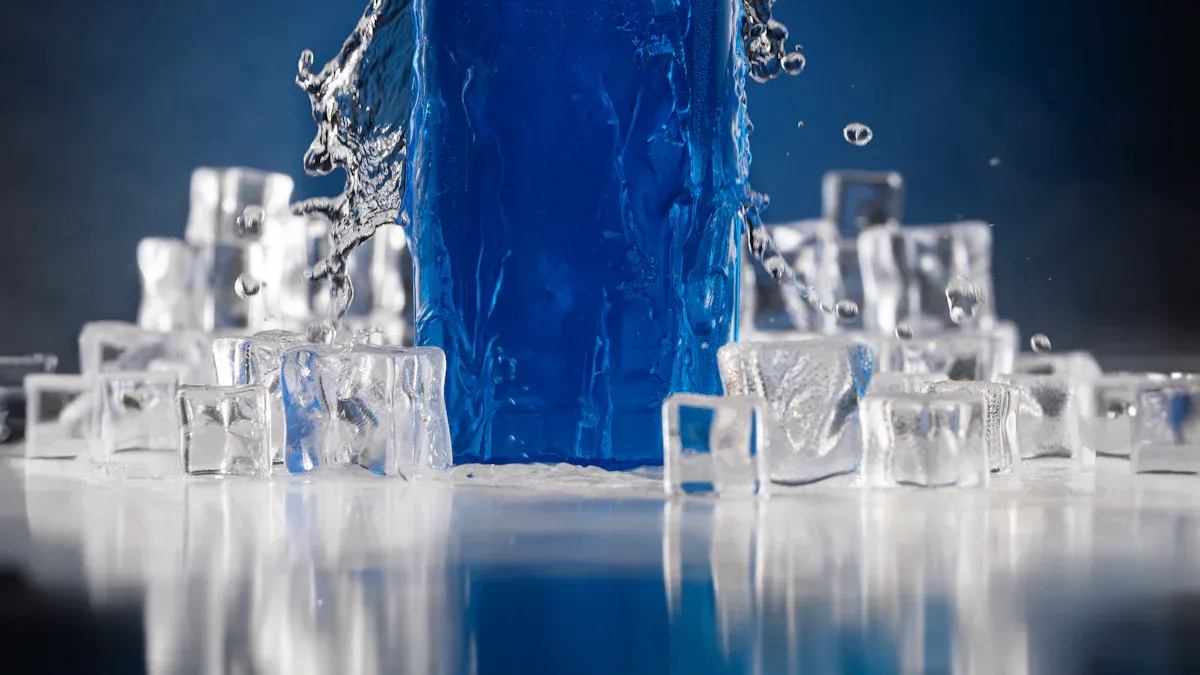
A water chiller system has a few main parts. Each part does something important. When you know what each part does, you can see how the system works well together.
Compressor
The compressor is like the heart of the chiller. It sits at the start of the cooling loop. It takes in low-pressure refrigerant vapor from the evaporator. Then, it squeezes the vapor to make it high pressure. This makes the refrigerant hotter. The compressor sends the hot vapor to the condenser. The cooling process cannot work without the compressor.
Evaporator
The evaporator is where cooling happens. Cold refrigerant meets warm water here. The refrigerant takes heat from the water. This cools the water and turns the refrigerant into vapor. The evaporator keeps taking heat away, so cooling stays steady. Cold plates or heat exchangers can help the evaporator work better.
Condenser
The condenser is where the hot refrigerant vapor goes next. Here, the vapor gives its heat to air or water outside. The refrigerant cools down and becomes a liquid again. You can use water-cooled or air-cooled condensers. Water-cooled types often use cooling towers for extra help. The condenser gets the refrigerant ready for more cooling.
Expansion Valve
The expansion valve controls how much refrigerant goes into the evaporator. It lowers the pressure of the liquid refrigerant before it enters. This makes the refrigerant very cold. The valve helps keep cooling steady and safe. If you pick the right valve size, your chiller works better and lasts longer.
Tip: Pumps, reservoirs, and filters are also important in a chiller system. Pumps move water through the system. Reservoirs hold extra water and keep the flow steady. Filters keep the water clean, so the cooling parts last longer.
Here is a table that shows how the main parts work together for good cooling:
Component | Role in Cooling Loop | Interaction with Other Components |
|---|---|---|
Compressor | Raises refrigerant pressure and temperature | Sends hot vapor to condenser |
Evaporator | Absorbs heat from water, cools it down | Receives cold refrigerant from expansion valve |
Condenser | Releases heat from refrigerant to outside | Gets hot vapor from compressor |
Expansion Valve | Lowers refrigerant pressure for cooling | Feeds cold refrigerant to evaporator |
When you put all these parts together, you get a chiller system that gives strong, steady cooling. Each part helps the others, so you always get the right temperature.
Water Chiller Applications
Industrial Uses
Factories and plants often use industrial chiller systems. These systems help keep machines and products cool. Using an industrial chiller stops equipment from getting too hot. It also helps make products better. Many industries need chillers for safe and steady cooling. These include food processing, plastics, and chemicals.
Industrial chillers can help save energy and lower downtime.
They give better climate control and fewer alarms.
Cleaning and smart controls help chillers last longer.
One company improved its chiller by cleaning the coils deeply. After this, the chiller had lower head pressure and quieter compressors. There were also fewer alarms. Power checks showed the chiller used less energy. Workers felt more comfortable at work. The lead technician said the system was a great investment. It made the chillers work better and more reliably.
Smart chillers now use IoT and AI to work better and follow new green building rules.
Commercial and Residential
You can find water chillers in big offices, hospitals, malls, and some homes. These systems help keep rooms cool and comfortable. In commercial buildings, chillers work with HVAC systems. They help control temperature and humidity. Hospitals use chillers to keep medical equipment safe. They also help keep patients safe.
The chiller control panel market was $1.3 billion in 2023. Experts think it will grow to $2.4 billion by 2034. This is because of more smart buildings and new energy rules. Better technology also helps. Many companies now make custom solutions for offices, stores, and hospitals.
Sector | Main Benefit | Example Use |
|---|---|---|
Office | Comfort, efficiency | Central cooling |
Hospital | Equipment safety | MRI, labs |
Retail | Product protection | Grocery, pharmacy |
Aquariums and Specialty
Water chillers are also used in aquariums and hydroponics. They help keep water at the right temperature for fish and coral. This stops stress and disease. Hydroponic farms use chillers to cool water for plant roots. This helps plants grow better.
More data centers now need advanced cooling. Immersion cooling uses water chillers to save energy and lower costs. Growth in AI, cloud services, and crypto mining increases this need. Data center operators want cooling that saves energy and is good for the planet.
You can pick a water chiller for almost any job, from keeping fish healthy to running strong computers.
Water Chiller Benefits
Efficiency
You want to save energy and money with cooling. Water chillers help you do this job. They use smart controls and advanced compressors to use less power. Many chillers work with hvac systems to cool big areas. This gives strong cooling but does not waste energy. Some chillers have variable speed drives. These drives change how much cooling you get. You only use the cooling you need. Water chillers also work well with an air handling unit. This setup gives steady cooling in offices, factories, and hospitals.
Lower energy bills
Less water wasted
Equipment lasts longer
Tip: Using a water chiller in your hvac system can cut energy use by up to 30% compared to old cooling ways.
Temperature Control
Many jobs need exact temperature control. Water chillers help you set the temperature you want. The system keeps the water at that level. This protects products and equipment from heat. Many chillers use a microcomputer or PLC to control temperature. Some chillers use a PID controller for very tight control.
Parameter | Value |
|---|---|
Temperature Control Accuracy | |
Temperature Control Range | +25℃ to 180℃ (inlet water) |
Control Mode | Microcomputer or PLC |
Safety Features | Fault display, easy maintenance |
Communication | RS485 (optional) |
You can trust your hvac system to keep rooms and machines safe. The EcoFlow valve helps keep water at the right temperature. It works without outside power. This valve also saves water and stops overheating. You get steady cooling for your air handling unit and other parts.
Equipment Protection
Water chillers keep your equipment safe. They stop machines from getting too hot. This lowers the risk of damage and fire. Many industries use chillers to protect cooling towers and transformers. Good cooling means fewer breakdowns and less downtime.
Evidence Aspect | Details |
|---|---|
Statistical Evidence | Fire causes about 50% of large losses in fossil power plants. Non-fire failures in transformers are 10 times more common. |
Protection Practices | Install water spray systems for early fire detection. Use low-combustibility cooling towers. Keep spare parts ready. |
Insurance and Risk Management | Good cooling and safety plans can lower insurance costs and downtime. |
You can follow rules like FM Global and OSHA to keep your cooling system safe. A strong hvac system with a water chiller and air handling unit gives you peace of mind. Your equipment stays cool and works longer.
Now you understand how a water chiller takes away heat. It helps keep things cool and protects your equipment. Chillers are used in factories, offices, and homes. They give safe and efficient cooling for many places. If you want to save energy and have better control, try using a water chiller.
Keep cool and choose the best cooling system for you!
FAQ
What is the main job of a water chiller?
You use a water chiller to remove heat from water. The chiller keeps water at a set temperature. This helps protect machines, products, and people from overheating.
How often should you maintain a water chiller?
You should check your water chiller every month. Clean filters and coils often. Schedule a full inspection by a technician at least once a year.
Can you use a water chiller at home?
Yes, you can use small water chillers at home. They help cool aquariums, hydroponic systems, or home labs. You get better temperature control for your projects.
What problems can happen with water chillers?
Common issues include:
Low refrigerant
Dirty filters
Faulty pumps
You should fix these problems quickly to keep your chiller working well.
See Also
A Comprehensive Guide To Water Chiller Unit Functions
Proven Strategies To Boost Walk-In Chiller Performance
How To Choose The Right Industrial Water Chiller Unit
Maximizing Chiller And Compressor Efficiency In ARKREF CO₂ Systems
